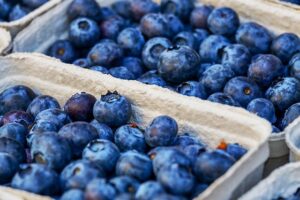Introduction
The relationship between a gene and a protein is a fundamental concept in molecular biology. Genes and proteins are both essential components of living organisms, and understanding how they are related is crucial to understanding the mechanisms of life. In this article, we will explore the intricate relationship between genes and proteins and how they work together to carry out various biological functions.
Genes: The Blueprint of Life
Genes are segments of DNA (deoxyribonucleic acid) that contain the instructions for building proteins. DNA is the hereditary material found in nearly all living organisms, and it carries the genetic information that determines an organism’s traits. Genes are specific sequences of nucleotides within the DNA molecule that encode the information needed to produce functional molecules, such as proteins.
Transcription: From DNA to RNA
The process of gene expression begins with transcription, where a gene’s DNA sequence is copied into a molecule called RNA (ribonucleic acid). This process occurs in the nucleus of eukaryotic cells and the cytoplasm of prokaryotic cells. The enzyme RNA polymerase catalyzes the synthesis of RNA using one strand of the DNA molecule as a template.
The resulting RNA molecule, known as messenger RNA (mRNA), is a complementary copy of the gene’s DNA sequence. However, instead of the nitrogenous base thymine (T) found in DNA, mRNA contains uracil (U). This RNA molecule carries the genetic information from the nucleus to the cytoplasm, where it will be used to synthesize proteins.
Translation: From RNA to Protein
The process of translation occurs in the cytoplasm and involves converting the information carried by mRNA into a functional protein. Ribosomes, the cellular machinery responsible for protein synthesis, read the mRNA sequence in groups of three nucleotides called codons. Each codon corresponds to a specific amino acid, the building blocks of proteins.
Transfer RNA (tRNA) molecules play a crucial role in translation. These molecules have an anticodon that is complementary to the mRNA codon and carry the corresponding amino acid. As the ribosome moves along the mRNA molecule, tRNA molecules bring the correct amino acids to the growing protein chain. This process continues until a stop codon is reached, signaling the end of protein synthesis.
The Central Dogma of Molecular Biology
The relationship between genes and proteins is summarized by the central dogma of molecular biology. This concept states that genetic information flows from DNA to RNA to protein. Genes contain the instructions for building proteins, and these instructions are transcribed into mRNA, which is then translated into proteins. This unidirectional flow of information is a fundamental principle in molecular biology.
Regulation and Variability
While the central dogma provides a general framework for understanding the relationship between genes and proteins, it is important to note that gene expression is a highly regulated process. Cells have mechanisms to control when and how genes are transcribed and translated, allowing them to respond to different environmental conditions and developmental stages.
Additionally, variations in genes can lead to variations in proteins, which can have significant implications for an organism’s traits and susceptibility to diseases. Mutations, changes in the DNA sequence, can alter the structure or function of proteins, sometimes resulting in genetic disorders or increased susceptibility to certain conditions.
Conclusion
In conclusion, the relationship between a gene and a protein is a fundamental aspect of molecular biology. Genes contain the instructions for building proteins, and these instructions are transcribed into mRNA and then translated into proteins. This process, known as the central dogma, governs the flow of genetic information in living organisms. Understanding the relationship between genes and proteins is crucial for unraveling the mechanisms of life and exploring the complexities of genetic variation and regulation.
References
– Alberts, B., Johnson, A., Lewis, J., Raff, M., Roberts, K., & Walter, P. (2002). Molecular biology of the cell (4th ed.). Garland Science.
– Lodish, H., Berk, A., Zipursky, S. L., Matsudaira, P., Baltimore, D., & Darnell, J. (2000). Molecular cell biology (4th ed.). W. H. Freeman.
– Nelson, D. L., Cox, M. M. (2008). Lehninger principles of biochemistry (5th ed.). W. H. Freeman and Company.













